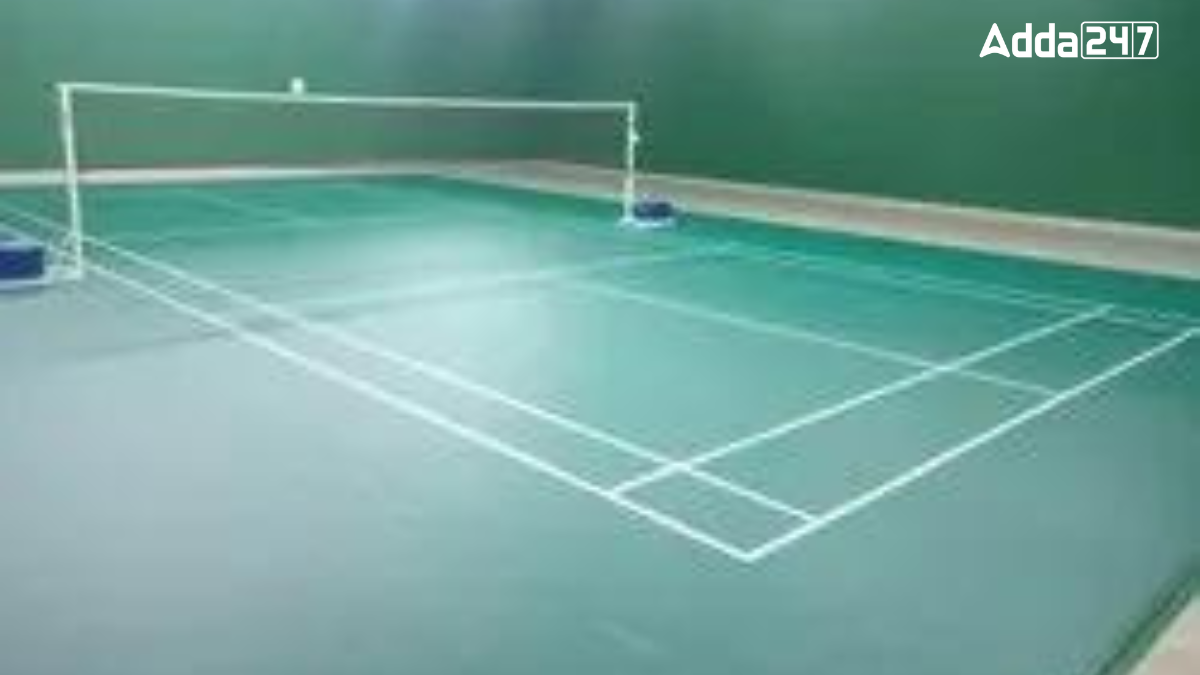Badminton is a globally enjoyed sport known for its fast-paced and competitive nature. A key aspect of the game is the standardized dimensions of the badminton court, which ensure fair play and consistency across all levels. This article provides a detailed overview of these dimensions, including the overall court size, boundary lines, net height, and specific markings for singles and doubles play.
The Size of a Badminton Court
A full-size badminton court that is marked out for both singles and doubles matches is 13.41 meters (44.00 feet) long and 6.10 meters (20.00 feet) wide. This size is consistent for all levels of play, from junior games to senior Olympic matches. The Badminton World Federation (BWF) mandates these dimensions.
Shapes and Lines of Badminton Court
A badminton court is rectangular and divided into two sides by a net in the middle. The lines marking the court should be 4 centimeters (1.57 inches) thick and usually white for easy visibility against the court surface.
Safety Perimeters
Officially, a 61 centimeters (2 feet) safety perimeter is required around the court according to the BWF. However, many sporting organizations, like Sport Scotland, recommend a 2 meters (6.56 feet) gap between the court and any walls or hazardous obstacles.
Net Height in the Badminton Court
The net on a badminton court is 1.55 meters (5.09 feet) high at the ends and 1.524 meters (5.00 feet) high at the center. The net’s width is always 6.10 meters.
Single Badminton Court Dimensions
A singles badminton court is 13.41 meters long and 5.18 meters wide. The diagonal length from corner to corner is 14.37 meters, with a total surface area of 69.46 square meters.
Double Badminton Court Dimensions
A doubles badminton court is 13.41 meters long and 6.10 meters wide. The total surface area is 81.80 square meters or 880.00 square feet.
Badminton Court Lines
Outer Sidelines: Outer sidelines, or doubles sidelines, run the full length of the court and are 5.18 meters (17.00 feet) apart. Shots landing inside these lines are considered “in” for doubles matches.
Inner Sidelines: Inner sidelines for singles matches are 0.46 meters (1.50 feet) inside the outer sidelines, setting the court width at 5.18 meters (17.00 feet).
Baselines: Baselines mark the court’s length perimeter and run the full width of the court. Shots landing beyond the baseline are out of play in both singles and doubles.
Badminton Service Areas
Double Back Service Line: For doubles, the back service line is marked 76 centimeters (2.5 feet) from the baseline and runs parallel to it.
Short Service Line: The short service line is 1.98 meters (6.50 feet) from the net on each side. A serve must land beyond this line to be in play.
Center Line: The center line divides the court from the short service line to the baseline on each side, marking the left and right service areas.
Singles Service Area: The singles service area is from the centerline to the inner sideline, from the short service line to the baseline on the opposite side. Each service area is 2.59 meters (8.5 feet) wide and 4.72 meters (15.5 feet) long, with a surface area of 12.22 square meters (131.53 square feet).
Doubles Service Area: In doubles, the service area is from the centerline to the outer sideline and from the short service line to the doubles back service line. Each service area is 3.05 meters (10 feet) wide and 3.96 meters (13 feet) long, with a surface area of 12.08 square meters (130.02 square feet).
Badminton Playing Surfaces
Synthetic Courts: Synthetic courts, made from PVC or PU, are considered the best. They provide anti-slip surfaces and shock absorption, reducing joint impact.
Wooden Courts: Wooden courts are common but can be slippery. They need regular polishing and don’t offer the same grip and support as synthetic surfaces.
Asphalt Courts: Asphalt courts, often used for tennis, can double as badminton courts. They are durable but can lead to repetitive strain injuries due to their hard surface.




 Which Fish is known as the King of India...
Which Fish is known as the King of India...
 What was the Old Name of China? Know the...
What was the Old Name of China? Know the...
 What is the Capital of Senegal? Know Abo...
What is the Capital of Senegal? Know Abo...







